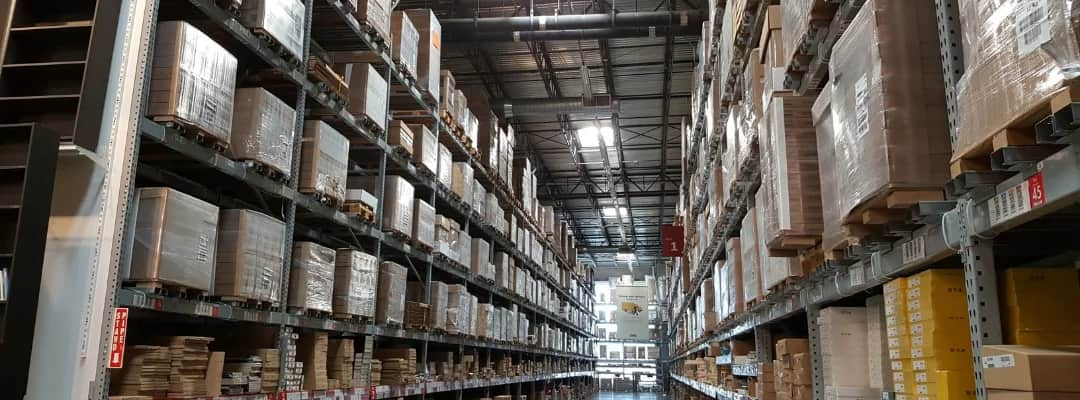AN INTRODUCTION TO FOREIGN-TRADE ZONES
Foreign-Trade Zones (FTZ) are secured, designated locations around the United States or near a U.S. Customs Port of Entry where foreign and domestic merchandise is generally considered to be in international commerce and outside of US Customs territory. As a result, activated businesses in an FTZ can reduce or eliminate duty on imports and take advantage of other benefits to encourage foreign commerce within the United States.
Created by Congress in the Foreign-Trade Zones Act of 1934, Foreign-Trade Zones continue to thrive to better meet the needs of American companies in the global economy. Foreign-Trade Zones continue to be a vital resource for trade in the United States. According to its 2018 Annual Report to Congress, the Foreign-Trade Zones Board notes that are more than 195 active FTZ programs across the United States, employing approximately 440,000 people at approximately 3,300 businesses, and importing over $793 billion in shipments.
Certain types of merchandise can be imported into a Zone without going through formal Customs entry procedures or paying import duties. Customs duties and excise taxes are due only at the time of transfer from the FTZ for U.S. consumption. If the merchandise never enters the U.S. commerce, then no duties or taxes are paid on those items.
It is the intent of the U.S. foreign-trade zone program to stimulate economic growth and development in the United States. In an expanding global marketplace, there is increased competition among nations for jobs, industry, and capital. The FTZ program was designed to promote American competitiveness by encouraging companies to maintain and expand their operations in the United States.
The FTZ program encourages U.S.-based operations by removing certain disincentives associated with manufacturing in the United States. The duty on a product manufactured abroad and imported into the U.S. is assessed on the finished product rather than on its individual parts, materials, or components. The U.S. based manufacturer finds itself at a disadvantage compared with its foreign competition when it must pay a higher rate on parts, materials, or components imported for use in a manufacturing process. The FTZ program corrects this imbalance by treating products made in the zone, for the purpose of tariff assessment, as if it were manufactured abroad. At the same time, this country benefits because the zone manufacturer uses U.S. labor, services, and inputs.
WHAT CAN BE DONE IN A FOREIGN-TRADE ZONE?
Any merchandise that is not prohibited from entry into the U.S. may generally be admitted into a Zone. Manufacturing, processing and any activity that results in a change of the tariff classification can occur in a Zone but must be specifically approved by the FTZ Board. Retail trade is prohibited in Zones.
Although FTZs are considered in international commerce, FTZ sites and facilities remain within the jurisdiction of local, state, and/or federal governments and agencies. If applicable, import licenses or permits from other government agencies may still be required. Products may be excluded if agencies determine that zone facilities are inadequate for storage and handling requirements. Products that are deemed detrimental to public health, interest, or safety may be excluded by the Foreign-Trade Zones Board. Similarly, the Board may place restrictions upon the zone status and type of operation that may be performed upon certain merchandise.
THE ADVANTAGES OF USING A FOREIGN-TRADE ZONE
The benefits associated with zone use will vary depending upon the type of operation involved and authority granted by the Foreign-Trade Zones Board and Customs. Zones may provide some or all of the following benefits: *scroll down to see more in-depth definitions of benefits
• Duty Exemption
• Duty Deferral
• Duty Reduction or Inverted Tariff
• Merchandise Processing Fee (MPF) Reduction
• Streamlined Logistics
• Quota Avoidance
Other Benefits: Better inventory control and security lead to better compliance with CBP requirements; Customs supervision may result in lower security and insurance costs. Duty payable on FTZ merchandise does not need to be included in the calculation of insurable value, again lowering insurance costs. Reduced transportation costs may also result from streamlined logistics. Harbor Maintenance Fee is paid quarterly instead of at the time imports arrive. Merchandise Processing Fees are paid at the time goods leave the zone.
Foreign-Trade Zone Benefits in Depth**
Duty Exemption: no duties or quota charges on re-exports (exception applies for exports to Canada and Mexico under NAFTA). By using a Foreign-Trade Zone, the company avoids the lengthy Customs duty drawback process. No duty is paid on goods destroyed in the zone, which can benefit a company with fragile imports or with manufacturing processes that result in large amounts of scrap.
Duty Deferral: Customs duties and federal excise tax deferred on imports until they leave the zone and enter the U.S. Customs territory. (Zone merchandise may move in-bond, Zone-to-Zone transfers without payment of duty.) Unlike bonded warehouses or temporary importing under bond programs, there is no limit on the length of time that merchandise may remain within the Zone, whether or not duty is owed.
Duty Reduction (Inverted Tariff): Where zone manufacturing results in a finished product that has a lower US Harmonized Tariff rate than the rates on foreign inputs, the finished product may be entered into the U.S. Customs territory at the duty rate that applies to its finished condition. Moreover, duty is not owed on labor, overhead or profit attributable to zone production operations.
Merchandise Processing Fee (MPF) Reduction: MPF is only paid on goods entering the U.S. Customs territory. Zone users are able to file a single entry for all goods shipped from a zone in a consecutive seven-day period instead of one entry file for each shipment (excluding merchandise subject to live entry). MPF fees are charged at 0.3464% of the Total Estimated Value (TEV) of the shipment, with a minimum fee of $25 and a maximum fee of $485 per entry. Fewer entry filings can also reduce Brokerage fees.

